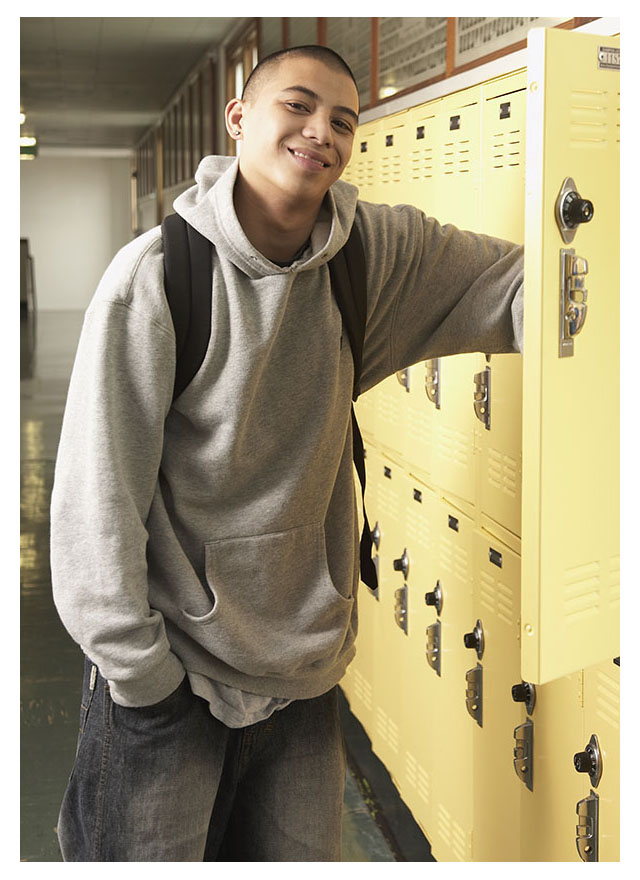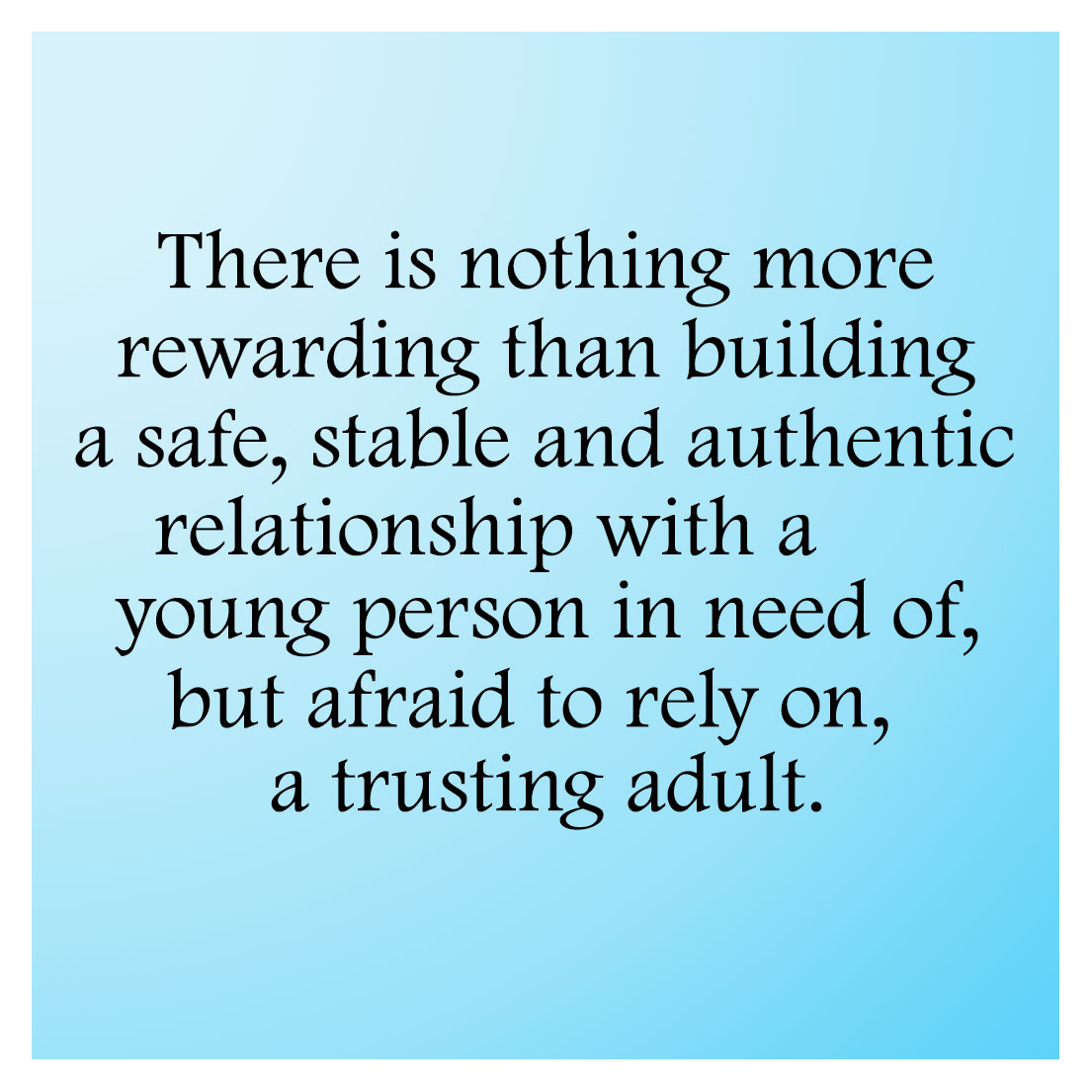Becoming a Trauma-Informed School Professional
By Stephanie Guinosso, PhD | February 26, 2018
Senior Research Associate, ETR
“Our goal is to create a beloved community. This will require a qualitative change in our souls as well as a quantitative change in our lives.”
Martin Luther King, Jr.
This quote resonates deeply for me. It truly captures the journey we must embark upon to become trauma-informed professionals working within trauma- and healing-informed systems.
I first heard this quote, and saw its applicability to trauma-informed approaches, from a fierce and inspiring colleague and community partner, Kanwarpal Dhaliwal. She co-directs the RYSE Youth Center in Richmond, California. RYSE aims to transform and create systems that effectively respond to young people in the community by meeting youth priorities, needs and interests.
One of the many ways that RYSE upholds their commitment to young people is by convening an annual Trauma and Healing Learning Series. They bring together a diverse and passionate collection of community members ready to learn, reflect and commit—together—to healing-centered practices that best serve young people and their families in the RYSE community.
At the start of every session, Kanwarpal eloquently and passionately sets the learning intention with the King quote from above.
A Quantitative Change in Our Lives
As science-based practitioners, it is sometimes easier to start with the quantitative changes we can make in our lives. We can seek out programs, practices and policies that have positive impacts on individuals, communities and systems. Over the last five years, the convergence of theory and empirical evidence across many scientific disciplines has unleashed an unprecedented focus on proactively advancing trauma-informed systems of care. This is one of the most powerful ways to mitigate the life-long health impacts of trauma and promote healing and resilience.
According to the Substance Abuse and Mental Health Services Administration’s (SAMHSA) concept of a trauma-informed approach, a program, organization or system that is trauma informed:
- Realizes the widespread impact of trauma and understands potential paths for recovery;
- Recognizes the signs and symptoms of trauma in clients, families, staff and others involved with the system;
- Responds by fully integrating knowledge about trauma into policies, procedures and practices; and
- Seeks to actively resist re-traumatization.
Several school-based models have operationalized these four Rs into concrete policies and practices. Examples include:

Emerging Models
Despite the early success of these models at improving school climate and student behaviors and well-being, there is no current consensus on a definitive approach for becoming a trauma-informed school. The field is still very much in an innovative “launch and learn” stage. However, emerging school-based models share common guiding principles and multi-tiered systems of supports. The HEARTS model, for example, emphasizes the following principles, which are incorporated into HEARTS interventions and supports across all three levels of the multi-tiered system of their support framework:
- Understanding trauma and stress
- Establishing safety and predictability
- Fostering compassionate, dependable relationships
- Promoting resilience and social emotional learning
- Practicing cultural humility and responsiveness
- Facilitating empowerment and collaboration
Ongoing research is designing approaches, identifying indicators and evaluating outcomes. This will help us better determine just how we apply these principles quantitatively and effectively in our work.
A Qualitative Change in Our Souls
As evidence mounts that allows us to quantify change that occurs as we implement these models, it becomes clear that becoming trauma-informed is not simply about just “doing” something differently. It is also about “being” different.
Using a trauma-informed lens requires a shift in mindset away from blame, judgment, victimization and punishment; and towards empathy, understanding, compassion and repair. This often means undoing and re-wiring habitual responses to behavior. When facing an individual who presents a challenge or conflict, instead of asking,
“What is wrong with this person?”
we shift our response to ask,
“What has happened to this person?”
and even,
“What is right with this person?”

Bringing this type of practice to our work results from the qualitative change in our souls. To shift in this way, we need to develop our own self-awareness and self-regulation, examine our own internal biases, prioritize relationships and collaboration, and build upon strengths. We must hold ourselves, one another and our systems accountable. It takes presence, patience, persistence and ongoing practice to do this.
In my own life and work, I actively endeavor to make this shift daily. Some days I am great, and others, not so much! In my personal sphere of influence, I encounter many young people who score high on measures of adverse childhood experiences (ACEs). They may be coping with disrupted families, incarcerated parents, mental health issues and substance use in the family, poverty, abuse and more.
These young people are often labeled as troublemakers, defiant, or disrespectful because of the behaviors they are likely to exhibit. However, a trauma-informed lens gives us cause for pause. We need to go beyond the behaviors and notice the motives behind the behaviors. In doing so, problematic behaviors can often be seen as an expression of an underlying need or fear.
To move towards a healing response, we must focus on the person—what has happened? What is their underlying need and how can this best be met? What are their strengths and how can we bring those to the young person’s attention? When young people believe they have strengths, they start seeing opportunities to use them.
People who embark on this journey to become trauma-informed professionals inevitably learn new things about themselves and their students. While each of our experiences will be distinct, these efforts will likely change the way we see ourselves and others in both personal and professional roles.
We may develop greater self-awareness and a deeper understanding for others. We may start seeing students as more capable and with greater innate strengths and resilience. In turn, our students and colleagues may start seeing these same qualities in each other. These are excellent returns on the effort to become better informed and more skillful in practice. In my view, there is nothing more rewarding than building a safe, stable and authentic relationship with a young person in need of, but afraid to rely on, a trusting adult.

Interested in Learning More?
If you are interested in making a quantitative change in your life and a qualitative change in your soul to become more trauma-informed, I have some fine resources to recommend. I’ve listed some of my favorite articles and books below. I encourage you to explore these and other resources in community with others.
Start a book club and discussion group. Host a screening of the documentary film Resilience. Join ACEs Connection and meet with others interested in creating change in your region, or simply make a new connection that will help you build empathy and understanding where you currently hold conscious or unconscious bias.
Articles
Blodgett C and Dorado J (2016). A selected review of trauma-informed school practice and alignment with educational practice. California Endowment: San Francisco, CA.
National Child Traumatic Stress Network, Schools Committee (2017). Creating, supporting, and sustaining trauma-informed schools: A system framework. Los Angeles, CA, and Durham, NC: National Center for Child Traumatic Stress.
Books
Courageous Conversations About Race: A Field Guide for Achieving Equity in Schools. Singleton GE and Linton C (2005). Check out the Courageous Conversation website for additional information and posts of recent articles.
Fostering Resilient Learners: Strategies for Creating a Trauma-Sensitive Classroom. Souers K and Hall P (2016).
Learning to Breathe: A Mindfulness Curriculum for Adolescents. Broderick PC (2013).
Reaching and Teaching Children Who Hurt: Strategies for Your Classroom. Craig SE (2008).
Restoring Sanctuary: A New Operating System for Trauma-Informed Systems of Care. Bloom SL and Farragher B (2013).
Supporting and Educating Traumatized Students: A Guide for School-Based Professionals. Rossen E and Hull R (2013).
The Body Keeps Score. van der Kolk B (2014).
Teens Who Hurt. Hardy K and Laszloffy TA (2005).
Trauma Stewardship: An Everyday Guide to Caring for Self While Caring for Others. Lipsky L (2009). The Trauma Stewardship Institute also has a website worth checking out.
Treating Traumatic Stress in Children and Adolescents: How to Foster Resilience through Attachment, Self-Regulation, and Competency. Blaustein BE and Kinniburgh KM (2010).
Stephanie Guinosso, PhD, MPH, is a Senior Research Associate at ETR. She specializes in school-based trauma-informed approaches. She can be reached at stephanie.guinosso@etr.org.





